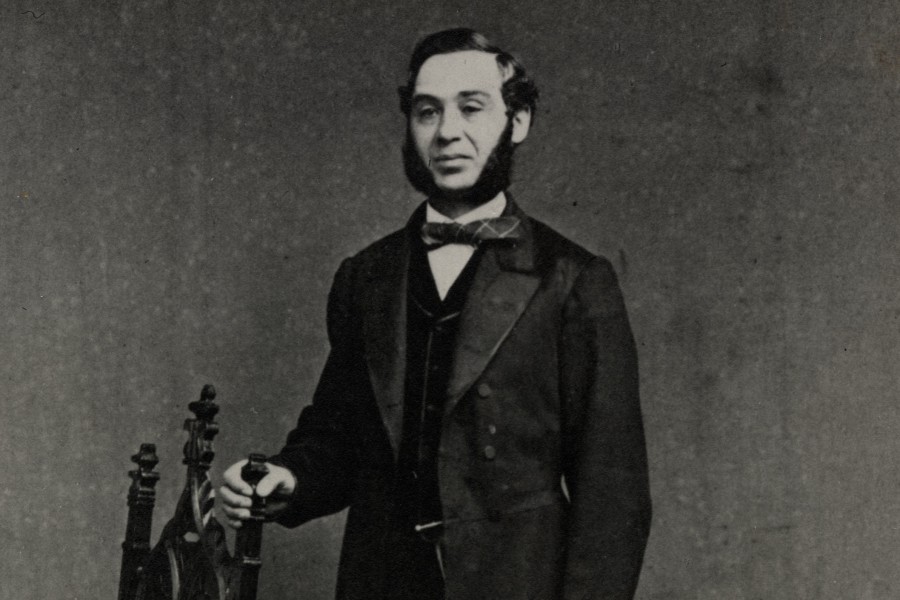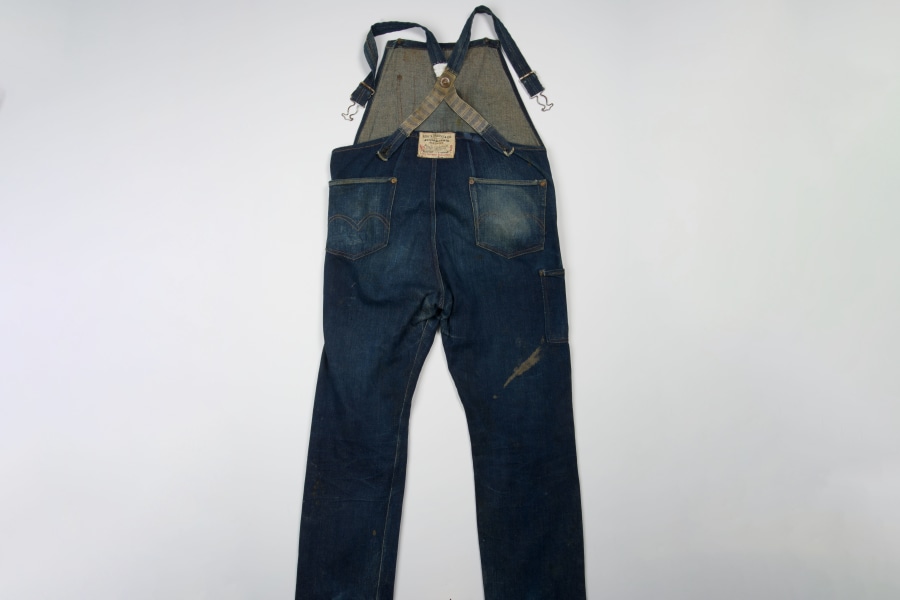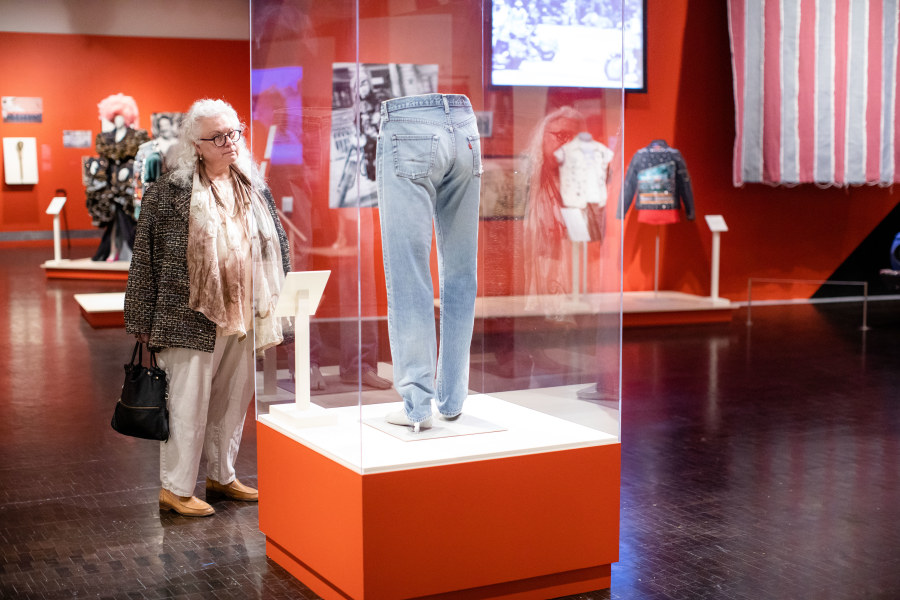
Levi Strauss & Co. Archives
This spring at The CJM, the exhibition Levi Strauss: A History of American Style tells the story of one of the many immigrants who helped build America—and who, incidentally, invented the pants you’re probably wearing right now. As we celebrate the life of Levi Strauss, the birth of the blue jean, and the city where it all began, our blog will be taking a closer look at some of the personal, historical, and cultural moments that make up the history of your favorite pair of jeans. And what better time to start our journey than on Levi Strauss’s 191st birthday?

Levi Strauss & Co. Archives
We explore many parts of Levi’s life in the exhibition, but even so, it’s hard not to wonder—who was Levi Strauss, really? What did the creator of the most ubiquitous pants on the planet look like? Today, we’re taking the opportunity to learn a little more about the man who brought you the 501®. Levi’s journey begins in 1847 when he and his family left their hometown of Buttenheim, Bavaria in search of freedom from the anti-Semitism plaguing the Jewish community throughout much of Europe. Like countless immigrants arriving in the U.S., Levi changed his name when he became a citizen (from Löb to Levi), but he remained deeply connected to his roots, and was a major participant in the formation of San Francisco’s Jewish community and culture. In California, Levi quickly took advantage of the business opportunities brought on by the gold rush, and struck (blue) gold when he partnered with tailor Jacob Davis to patent the riveted waist overall—and thus, an American style icon was born.

Lot 209 bib overalls, c. 1900. Levi Strauss & Co. Archives
These are the basic facts of Levi’s life. But a birthday just isn’t complete without a few stories, and thanks to the research of Levi Strauss & Co.’s historians, we have a few good ones. Many of the wilder stories surrounding Levi’s life aren’t true, but there are still plenty of yarns about “Uncle Levi” (a moniker earned for his famously informal demeanor, despite his equally famous formal wardrobe). For instance, a man once impersonated Levi to buy some high-quality champagne and a room at a luxury hotel, only to skip out on the bill (and this wasn’t the only time Levi was impersonated to capitalize on his trustworthy reputation)!
One of the more telling details we know about Levi is that he was famously forgiving. When a disgruntled customer was arrested for sending Levi a death threat, Levi dropped all charges simply because the man promised not to carry out his plans, an act that speaks to Levi’s trusting nature and willingness to forgive.
This sense of trust and collaboration are key to understanding not only who Levi was, but how his legacy and company came to be what they are today. By taking a chance on Jacob Davis’s idea of adding rivets to strengthen pants, Levi laid the foundation for 150 years of collaboration and ethical business practices. Today, Levi Strauss & Co. frequently partners with both established and emerging designers to continue expanding the versatility and cultural significance of denim. Many of the most impactful denim garments to emerge over the past decades—from the first bell bottoms designed in collaboration with Peggy Caserta to the Levi’s® jacket customized by Spike Lee—are results of the same collaborative spirit Levi showed in 1873.

Spike Lee jacket, 2018. Levi Strauss & Co. Archives
Clearly, Levi’s impact has been worldwide and profound. But when looking into his life and character, he was also, in many ways, a surprisingly regular person. He was generous, imperfect, and deeply connected to his roots. He was an immigrant who arrived in the U.S. to escape harsher discrimination elsewhere (and one of the lucky few to realize the increasingly elusive American dream). He was strikingly willing to give second chances—much like he took ahold of the chance for an improved life when he came to the U.S., and used it to build what would become a cornerstone of American style.

Steve Jobs’s 501® jeans, 1984–85 (installation view). Levi Strauss & Co. Archives. On view in Levi Strauss: A History of American Style at The Contemporary Jewish Museum, Feb 13–Aug 9, 2020. Photo by Gary Sexton Photography
We can’t really “know” historical figures, but it does give Levi’s story a little more depth to explore some of the quirks and qualities that made him who he was. And his successes can also serve as a reminder to the rest of us regular folks that with a little luck and the right opportunity, we have the power to make a big impact.
On that note, happy 191st, Levi!
Levi Strauss: A History of American Style is on view through August 8, 2021.
Published February 26, 2020.

Lucy Sims is the Editorial Coordinator at The Contemporary Jewish Museum (The CJM), where she works to ensure that The Museum's content is as engaging, effective, and error-free as possible. Sims graduated summa cum laude from the University of California, Santa Barbara with a degree in English and religious studies, and is passionate about writing, art, and creative expression of all kinds. She is also a tea enthusiast, music-lover, and proponent of Oxford commas.